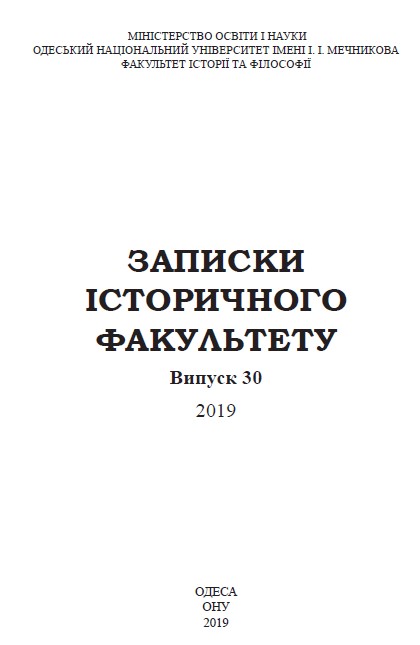АМФОРИ ТИПУ CAMULODUNUM 184 З ТІРИ
CAMULODUNUM 184 AMPHORAE FROM TYRAS
Author(s): Denis MasyutaSubject(s): Archaeology, Cultural history, Local History / Microhistory, Ancient World
Published by: Видавництво «Одеський національний університет І. І. Мечникова»
Keywords: Camulodunum 184 amphorae; passum; Roman period; Tyras; Black Sea area; Rhodes; Rhodian Peraea;
Summary/Abstract: The Camulodunum 184 amphorae are one of the most well-known varieties of early Roman containers in the Mediterranean region. At the same time, such vessels are not believed to enter the Black Sea region, with the area of their distribution being limited only to the territory of the Roman Empire. The aim of this article is introduction and comprehensive study of the Camulodunum 184 amphorae findings from Tyras. This will allow shedding light on the issues related to Tyras’ trade contacts, as well as expanding our notion about the economic relations between the Pontic and Mediterranean regions in the Roman era. The findings of Camulodunum 184 amphorae in Tyras are few in number and represented only by fragments. Such vessels are characterized by high, straight and wide neck with rounded rim, elongated ovoid body, conical stem and «horn-shaped» handles. Their volume is mainly 13,6 liters, although a specimen is known, containing only 8,5 liters. The main product transported in such amphorae was passum – a raisin wine made from dried grapes. This expensive kind of wine was very popular in the capital of the Roman Empire and among the prosperous population of its provinces. The Camulodunum 184 amphorae were produced from the late 1st century BC till the late 2nd century AD, and their production reached a peak in the turn of the eras – mid-2nd century AD.
Journal: Записки історичного факультету
- Issue Year: 2019
- Issue No: 30
- Page Range: 53-74
- Page Count: 22
- Language: Ukrainian

